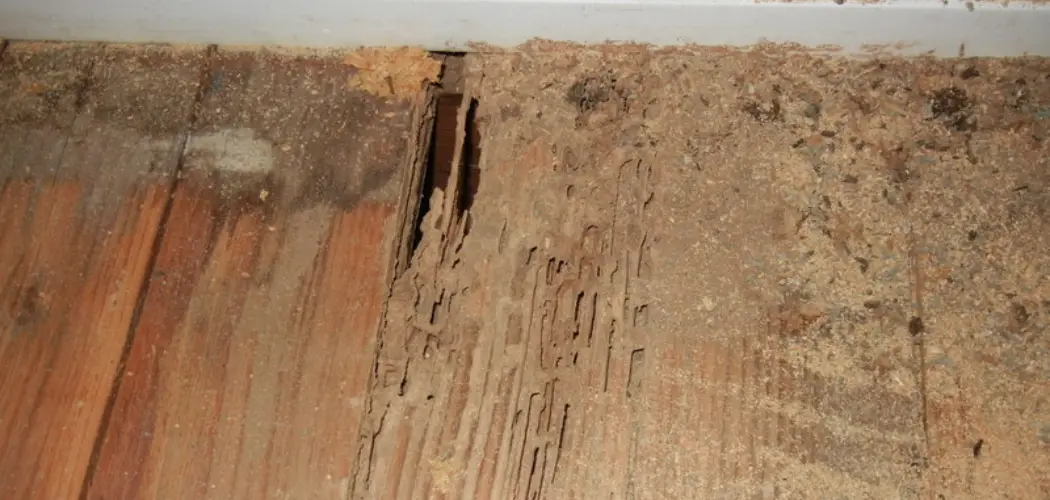Your wood floor has been through a lot, and you don’t want to replace it. Unfortunately, there is no denying that the damage caused by termites can be quite extensive and even devastating – but it doesn’t necessarily mean you are out of luck.
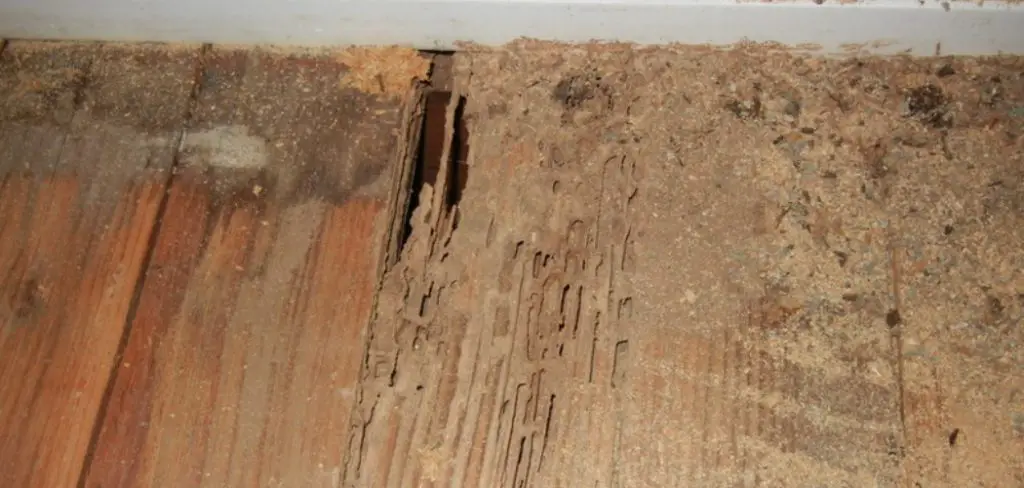
In this blog post, we will explore how to fix termite-damaged wood floors when you suspect termites have damaged them and discuss what steps must be taken for the repairs to succeed.
We’ll cover advice on tool selection, examining the damage thoroughly, and approaches for specific types of damage so that your solution can stand up against future attacks from those pesky pests. So, if your wood floors need attention due to an infestation or decay from termites, keep reading!
Necessary Items for Repair
Before starting the repair process, you must gather all the required items. Here are some basic tools that will be essential for most types of termite damage:
- Hammer and nails: You may need to reinforce damaged areas with additional nails.
- Chisel: This tool removes any splintered or rotten wood from the flooring. If the wood is severely damaged, you may also need to use a pry bar.
- Wood putty or filler: This will help fill any holes or gaps in the wood caused by termites.
- Sandpaper: You’ll need this to smooth out and level off any rough spots on the repaired area.
- Saw: If the termite damage requires cutting away a section of the flooring, a saw will be necessary.
- Protective gear: Always wear goggles and gloves to protect yourself from any debris or chemicals used during the repair process.
10 Steps on How to Fix Termite-damaged Wood Floors
Step 1: Assessing the Damage
It’s essential to examine the damage thoroughly before beginning repairs. Not only does this help determine what tools and materials are needed, but it also allows you to identify any underlying structural problems that must be addressed before repairing the wood floor. Some signs of termite damage include hollow or crumbling wood, sagging floors, and visible holes in the flooring.
Step 2: Eliminating Termites
Before starting any repairs, it’s crucial to eliminate the termites that caused the damage. Consult with a professional pest control company for this step, as they will have the necessary expertise and tools to eradicate the infestation effectively.
Step 3: Removing Damaged Wood
Carefully remove any damaged wood from the flooring using a chisel or pry bar. Be sure to wear protective gear and work slowly to avoid causing further damage.
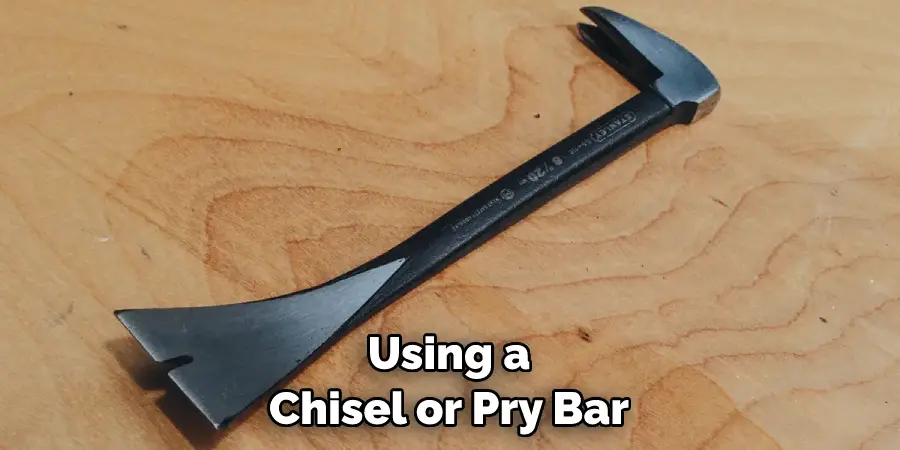
Step 4: Filling Holes and Gaps
Fill in any holes or gaps with wood putty or filler. This will help restore the integrity of the wood and prevent further damage.
Step 5: Sanding the Repaired Area
After the wood filler has dried, use sandpaper to smooth out and level off the repaired area. This will help create a seamless finish and make the repair less noticeable.
Step 6: Replacing Damaged Boards
If the termite damage is extensive, you may need to replace entire boards. Use a saw to remove and replace the damaged section with new flooring.
Step 7: Reinforcing with Nails
For added support, use a hammer and nails to reinforce any weakened or damaged wood floor areas.
Step 8: Applying Finishing Touches
Once all repairs are complete, apply any necessary finishing touches, such as staining or painting, to match the rest of your wood floor.
Step 9: Preventing Future Infestations
To prevent future termite infestations, address any moisture issues in your home and regularly inspect for signs of termites. Consider using termite-resistant materials when repairing or replacing your flooring.
Step 10: Seeking Professional Help
If you’re unsure how to fix termite-damaged wood floors, it’s always best to seek professional help. A flooring specialist or pest control expert can offer valuable advice and assistance to repair your wood floor and prevent future infestations.
Fixing termite-damaged wood floors with the right tools, materials, and steps is manageable. It’s essential to act quickly when you suspect termite damage, as ignoring it can lead to more significant problems in the future.
Always consult with professionals if you need clarification on any part of the repair process or need help eliminating a termite infestation. By taking these steps and proactively preventing future infestations, you can restore and protect your beautiful wood floors for years.
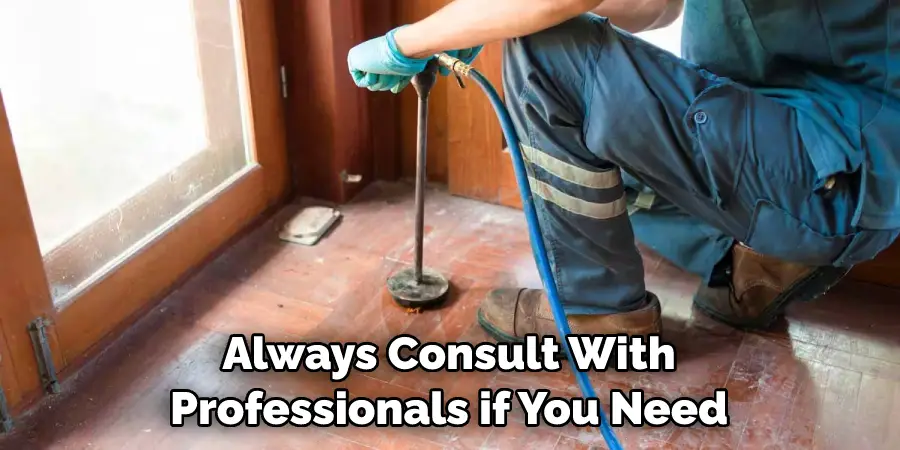
8 Care Tips for Wood Floor Maintenance
Aside from preventing termite infestations, proper maintenance and care are vital for preserving the beauty and longevity of your wood floors. Here are some tips to help you maintain your wood floors:
1. Sweep or Vacuum Regularly:
Dirt and debris can scratch and damage the surface of your wood floor, so it’s important to sweep or vacuum regularly to keep it clean.
2. Use Rugs or Mats:
Placing rugs or mats in high-traffic areas can help protect your wood floor from scratches and wear. Make sure to use rugs with a non-slip backing to prevent any accidents.
3. Wipe Up Spills Immediately:
Water can easily damage wood floors, so wiping up any spills immediately is important to avoid warping or staining.
4. Avoid High Heels:
High heels can cause dents and scratches on your wood floor, so it’s best to avoid wearing them inside if possible. If you have pets, regularly trim their nails to prevent scratches on your wood floor.
5. Use Furniture Pads:
Furniture can also cause scratches and dents on your wood floor, so using furniture pads can help protect the surface. Use felt pads on the bottom of the chair and table legs to prevent scratches and damage from furniture. This will also make it easier to move furniture around without leaving marks on your floor.
6. Keep Humidity Levels Stable:
Wood floors can expand or contract with changes in humidity, so it’s important to keep the humidity levels in your home stable. Use a humidifier during dry months and a dehumidifier during humid months to maintain consistent levels.
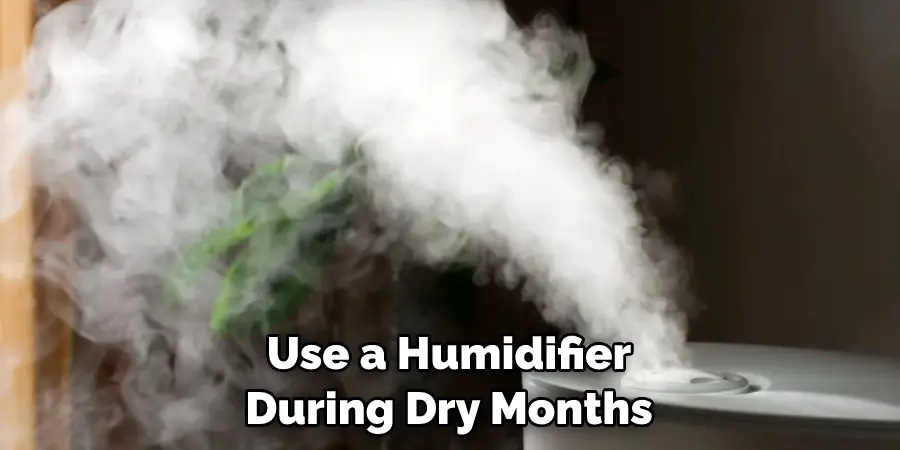
7. Avoid Harsh Chemicals:
When cleaning your wood floor, avoid using harsh chemicals that can damage the surface or remove protective coatings. Instead, use a mild cleaner specifically formulated for wood floors.
8. Refinish When Necessary:
Over time, your wood floor may show signs of wear and tear. In this case, it’s best to refinish the floor rather than constantly trying to repair small areas. Refinishing will give your wood floor a new look and protect it for years.
By following these care tips, you can keep your wood floor in top condition and avoid needing frequent repairs. With proper maintenance, your wood floor can last for decades and continue to add beauty to your home. So don’t neglect your wood floor – take care of it and enjoy its natural beauty for years!
Frequently Asked Questions
How Can I Tell if My Wood Floor Has Termite Damage?
Signs of termite damage include hollow or crumbling wood, sagging floors, and visible holes in the flooring. You may also notice termite droppings or mud tubes on your floorboards.
Can I Fix Termite-Damaged Wood Floors Myself?
Minor termite damage can be repaired by following the steps outlined in this guide. However, for extensive damage or unsure how to proceed, it’s best to seek professional help.
How Can I Prevent Termite Infestations in the Future?
To prevent termite infestations, address any moisture issues in your home, regularly inspect for signs of termites, and consider using termite-resistant materials when repairing or replacing your flooring.
How Often Should I Refinish My Wood Floor?
It depends on the amount of wear and tear on your floor, but generally, wood floors should be refinished every 7-10 years. However, you may need to refinish more frequently if your floor is heavily used or shows signs of damage.
Can I Use Any Cleaner on My Wood Floor?
No, it’s important to use a cleaner specifically formulated for wood floors and avoid harsh chemicals that can damage the surface or remove protective coatings.
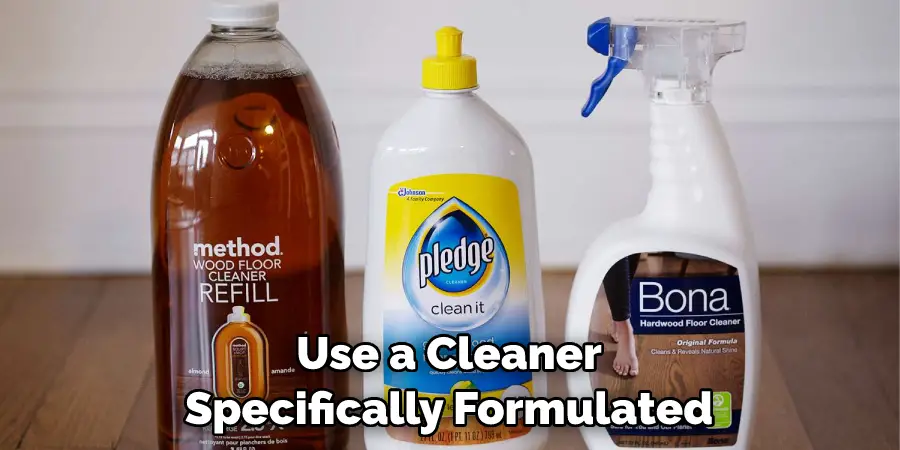
Can I Walk on My Wood Floor After Repairing Termite Damage?
It’s best to avoid walking on your wood floor for at least 24 hours after repairing termite damage to allow time for any adhesives or sealants to dry.
Regularly inspecting and maintaining your wood floors can catch termite damage early and prevent future infestations. Remember to seek professional help and follow the proper care tips to keep your wood floors looking beautiful for years. So don’t wait – start taking care of your wood floors today!
Conclusion
Wood floors are a beautiful and timeless addition to any home, but they require proper maintenance and care to stay in top condition. By following the tips on how to fix termite-damaged wood floors outlined in this guide, you can prevent termite damage, maintain your wood floors, and ensure their longevity. Remember to seek professional help if needed and never ignore signs of termite infestation.
With regular upkeep and proactive measures, your wood floors will continue adding warmth and beauty to your home for years. So take care of your wood floors and enjoy their natural charm! Remember, prevention is key – so start now and protect your wood floors for the future.

